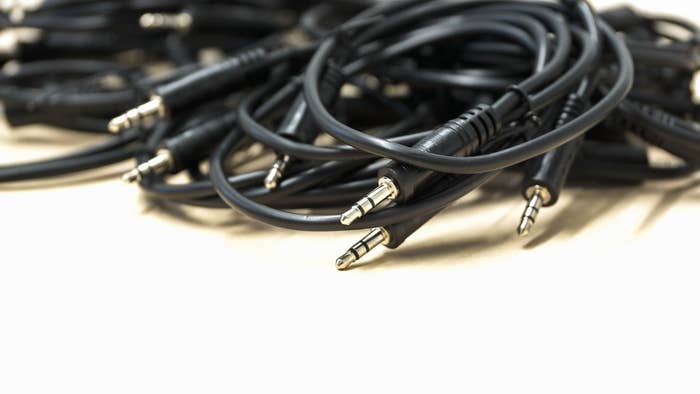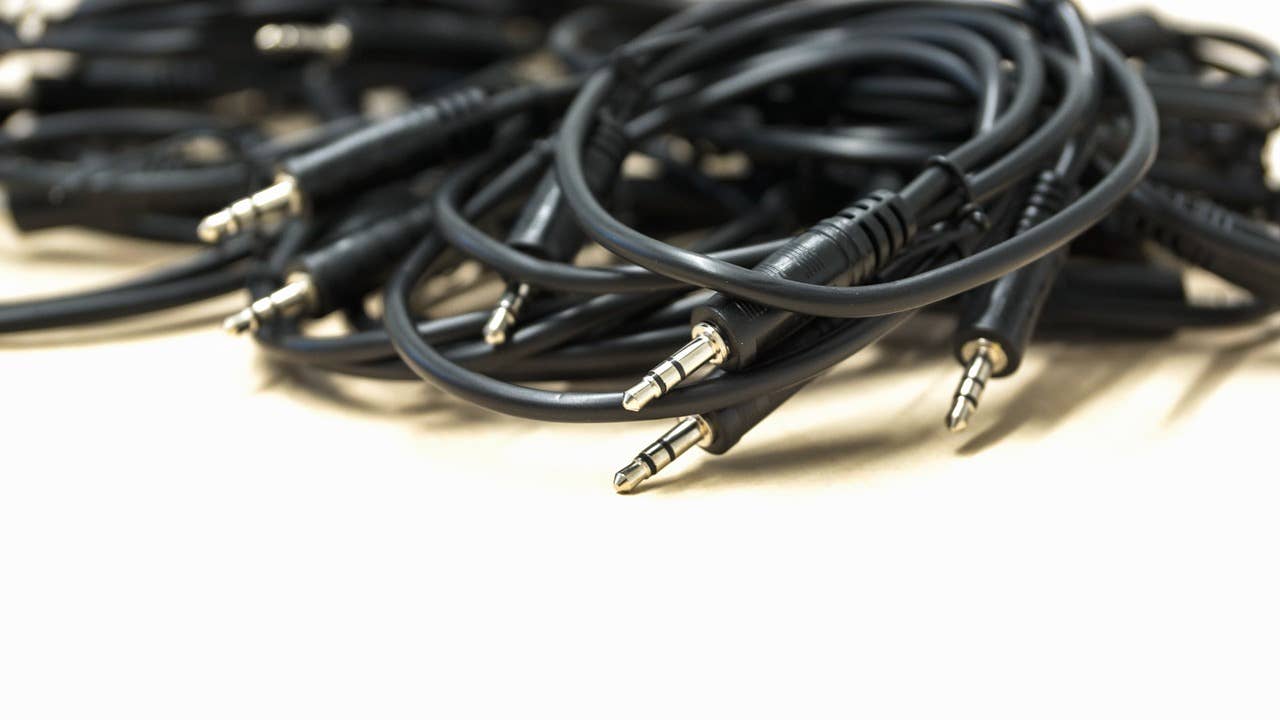
The “mini” plug, also known as the 3.5mm audio input/output port or aux cord, has died an unnatural death at the shockingly young age of 118. The cause of death was planned obsolescence. The mini is survived by its grandfather, the 1/4 inch plug, by its misbegotten offspring, the Apple Lightning Port, and by every airplane seat entertainment system in the world.
"Some people have asked why we would remove the analog headphone jack from the iPhone," said Phil Schiller, Apple’s marketing chief. Aside from the fact that Apple owns the world’s biggest wireless headphone company, he offered this explanation: “It really comes down to one word: courage. The courage to move on to do something new that betters all of us."
The announcement that Apple will be phasing out the headphone jack on the iPhone 7 stirs up deeper misgivings than the minor twinge we felt when the MacBook killed off CD disc drive or this or that iteration of the latest FireWire/USB/Ethernet/Lightning connection. The fact that more than 300,000 people have signed a petition asking Apple to reconsider has seemingly fallen on deaf ears.
many of us—even people who may not be ready to switch all the way back to vinyl LPs—still had a visceral connection to the aux cord that we are loathe to give up.
The aux wire is a little bit different, not unlike an audio umbilical cord. The 3.5mm connection is a technological throwback dating back to the days before the Sony Discman and Walkman, before the transistor radios of the mid 20th century, to a telephone switchboard patent from 1898.
In a world where tangible musical experiences seem ever fewer and further between, many of us—even people who may not be ready to switch all the way back to vinyl LPs—still had a visceral connection to the aux cord that we are loathe to give up. The aux cord was a great social equalizer. Living in an iPhone 7 world now means no more aux cord DJs playing music off their phones! No more passing the aux cord around in a car or at a party! No more magic moments like Bolt in Beijing circa 2008—not the race… the after party!
After winning his first gold medals at the 2008 Beijing Olympics, Usain Bolt showed up to a Puma sponsorship event and frankly, it was a little bit dry. But luckily, Bolt had come prepared with plenty of big dancehall tunes on his smartphone. Usain simply plugged in his iPhone 4, flipped into selector mode, and the whole place tun up!
How many other spontaneous musical moments have been made possible because of that one universal jack?
The stereophonic jack is known as a tip, ring, sleeve—or TRS—connection, allowing for stereo sound. The "tip" transfers audio into the left-hand earplug of a stereo headphone set, and the "ring" the right. The "sleeve" is the ground or "shield." The most modern plugs are TRRS, and have a second ring to allow control of a headset microphone or volume. Countless boom boxes sported a 3.5mm output port for headphones and sometimes a second input for the mic. There’s your old school hip-hop right there.
When Sony changed the game in 1979 with the Walkman, that 3.5mm headphone jack was the central nervous system of the whole thing. And those with external speakers used that same aux wire to rock the party. Now that Apple is ushering in their next big thing, somebody has to point out that the Lightning Port simply won't let you do as much stuff—like charging and raging at the same damn time. And let's face it, logging on will never feel quite the same as plugging in.
As music becomes less and less of a tangible experience, to be Shazam-ed and streamed rather than collected, we will miss that metallic click when you plug that aux cable into your laptop or your phone.
For those of us who have lived through the evolution and devolution of various music formats including 8-track, cassette, CD, MP3, USB, Bluetooth and so forth, that 3.5mm jack has been the common thread that ran throughout them all.
Let’s say you grew up driving a car that was manufactured with a cassette deck, like an ’87 Honda Accord, or even a 2000 VW Golf. You're bound to have a plastic cassette-to-aux adaptor with a thin black wire dangling out of your dashboard. (Clumsy as they may be, the sound on those cassette adapters is way better than the dreaded FM tuner adapter.) There’s just no substitute for the feeling of plugging the aux cable into your phone on a long drive, and letting your inner audio space take over the whole car for a while. Pairing to a wireless signal just isn’t the same.
As music becomes less and less of a tangible experience, to be Shazam-ed and streamed rather than collected, we will miss that metallic click when you plug that aux cable into your laptop or your phone. That satisfying feeling that says, “You’re locked and loaded, logged on and tuned in.”
This week De La Soul has the #1 rap album in America. The group’s first-ever single release, “Plug Tunin',” portrayed each member of the group as a different microphone plug in a mixing board. Where would Plug 1, Plug 2, and Plug 3 be without an aux cord to plug in? Somewhere in the cloud, I suppose.


